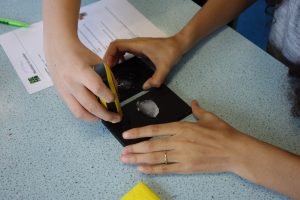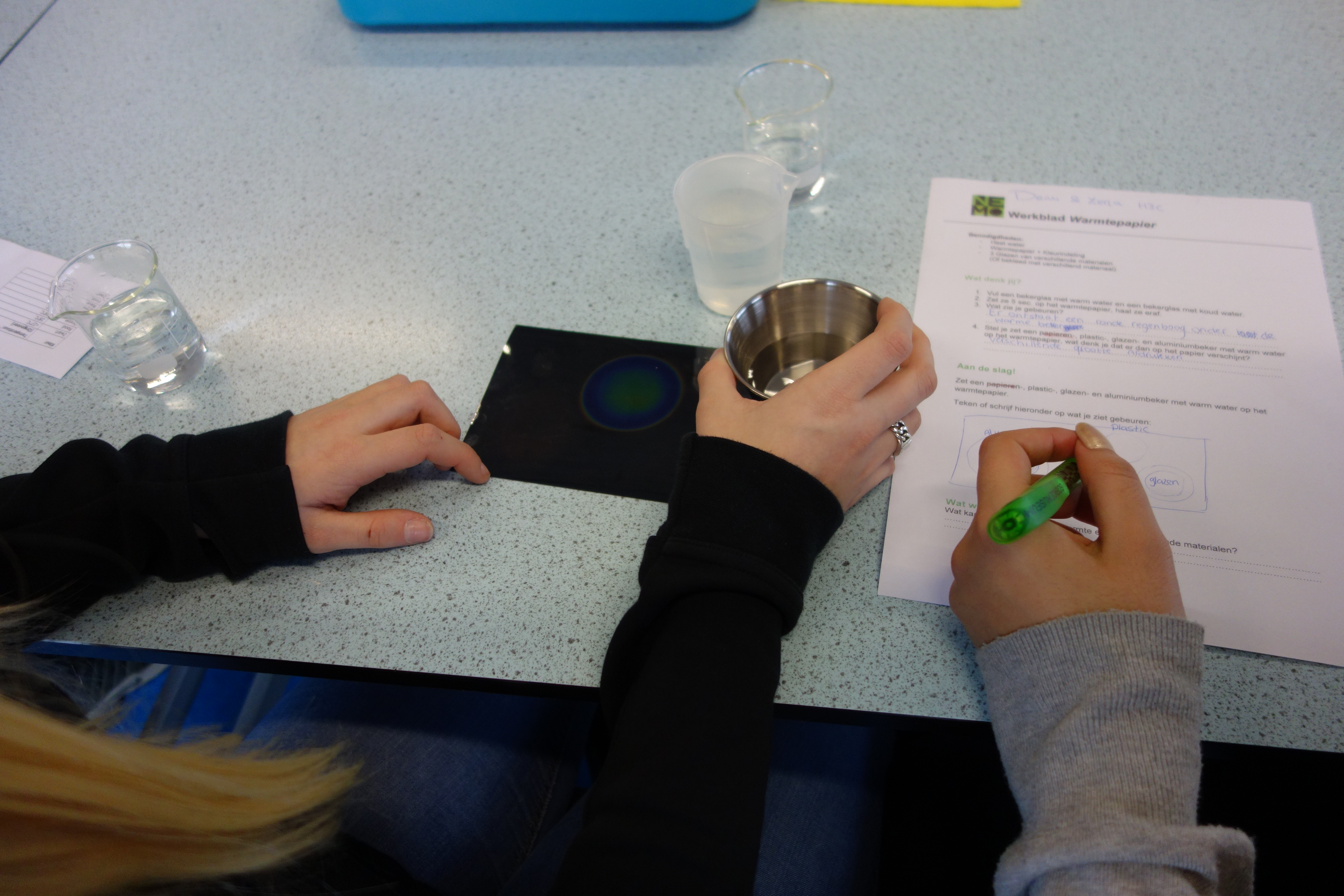Judith Bal, Meie van Laar – NEMO Science Museum
Conduction is one of the topics on which big misconceptions exist with secondary education students in the Netherlands. NEMO Science Museum developed a set of activities to try and change the existing misconceptions. We tested these at a secondary school in the Netherlands.
We tested the activities with three groups of Higher General Secondary Education students, aged around 16. The test was executed to see what works better to change the misconceptions: a cookbook method or an open inquiry based method.
In the first two groups we tested with pretty detailed inquiry experiments (cookbook version) with the last group we did an open inquiry activity. We provided this second group with a range of materials and the assignment to investigate. After the test, we realized that both methods worked really well to reach our goal of changing misconceptions. However, the second (open) method, resulted in both more fun as more frustration for the students and even more important. The students of the open method felt proud of their accomplishments.
The Activities
Both lessons started with a conversation about a butter melting experiment. The students have to predict on which spoon (wooden, plastic, glass, metal) butter will melt the quickest, if the spoons are placed in hot water. After this the students were told that to be able to predict the experiment more carefully, they were going investigate materials and conductivity.
In the cookbook version they conducted the following experiments, accompanied by a worksheet.
- Investigate if and/or why humans are/aren’t objective thermometers. Place fingers in cold and hot and in lukewarm water after that.
- Melt an ice cube on metal and plastic.
- Use thermo chromatic paper to research the conduction of hot water in different materials.
In the open inquiry based method we handed the students all the materials and asked them to use the materials to think of an experiment with which you can better predict the experiment from the introduction. We provided them with a worksheet with example questions.
Results of the test
- Students seem to enjoy the ‘cookbook’ activities from the start, where the group with the open assignment didn’t know where to start and they felt more frustrated at start.

- In the end the students from the open experiment felt more proud and interested in the topic, compared to the other group.
- The students are most surprised by the ice melting experiment.
- The students like working with the materials a lot. They use the infrared thermometer to measure other things than assi
gned, and they play with the different materials to get acquainted with them.
And now..
The test show that it is important to go forward with the open, inquiry based variant, but it still needs some improvements:
- Start or end with the experiment that shows people are not objective thermometers.
- Use the opening experiment to have a conversation about conducting heat and cold and let them explore after that.
Want to try?
After making some changes to the materials one of our partners will also test it. All materials will be cross-tested in different countries to get the widest feedback by end-users and once corrected, they will be freely available on the website: https://misstohit.deusto.es/ from May 2017

